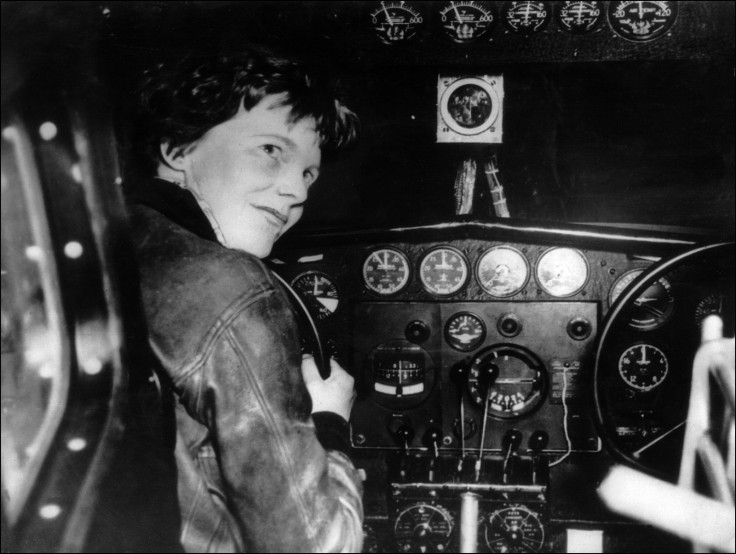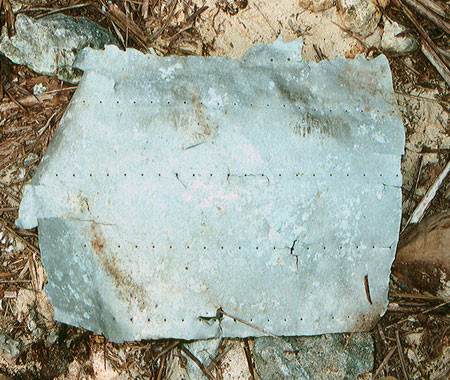Amelia Earhart Disappearance: Fragment of Lost Lockheed Electra Suggests Pilot Died as Castaway

A fragment belonging to the plane of famed American aviator Amelia Earhart which vanished over the Pacific Ocean in 1937 has been identified with a high degree of certainty.
The fragment is from an aluminium patch that was unique to Earhart's twin-engine Lockheed Electra.
At the start of her second world flight attempt, the custom-made window was removed and replaced with an aluminium patch that had been modified.
"Its dimensions, proportions, and pattern of rivets were dictated by the hole to be covered and the structure of the aircraft," a statement on The Earhart Project said. "The patch was as unique to her particular aircraft as a fingerprint is to an individual."
The fragment was first discovered in 1991 in Nikumaroro, a coral atoll that forms part of the Phoenix Islands, Kiribati, in the western Pacific Ocean. "Research has now shown that a section of aircraft aluminium Tighar [The International Group for Historic Aircraft Recovery] found on Nikumaroro in 1991 matches that fingerprint in many respects," the statement continued.

Explaining why the aluminium panel was added to the plane, researchers said: "Some time in early 1937, as part of the preparations for Earhart's world flight in March, somebody in Earhart's organisation decided there should be a large, non-standard window on each side of the cabin.
"Although no rationale has been found in the available literature, the purpose of these special windows has long been presumed to be for the navigator to take celestial observations."
A photo taken by the Miami Herald of the plane in Miami shows Earhart departing for Puerto Rico with a patch where the window used to be.

Speaking to Discovery News, Tighar executive director Ric Gillespie said: "This is the first time an artefact found on Nikumaroro has been shown to have a direct link to Amelia Earhart."
It is generally believed Earhart did not crash in the Pacific Ocean, but instead ran out of fuel somewhere near Howland Island. In her last transmissions, she indicated gas was running low and that they had been unable to reach the ship by radio. Her last contact indicated they were unsure of their location.
The fragment finding would indicate that the pilot and her navigator, Fred Noonan, crashed on Nikumaroro and either died on impact or become castaways eventually dying on the atoll.
"The artefact is not, as previously suspected, a random fragment from an aircraft shredded by the surf, and its removal from the aircraft appears to have been due, at least in part, to human action," Tighar said. "That could only happen if the patch was broken out when the aircraft was on the reef surface – but when and by whom? Somehow the patch/artifact ended up on the island, so it must have either washed or been carried ashore."
Earhart was declared dead in absentia on 5 January 1939. Tighar plans to return to Nikumaroro to search for more evidence in June next year.
"If Artifact 2-2-V-1 is from the Earhart aircraft, as it appears to be, it seems to have had a different history from the rest of the aircraft. Did the underwater search for scattered wreckage fail because the wreckage is not scattered? Is the wreck of Earhart's aircraft far more intact than Tighar had assumed? Is the anomaly the aircraft? The only way to know is to go look."
© Copyright IBTimes 2025. All rights reserved.






















